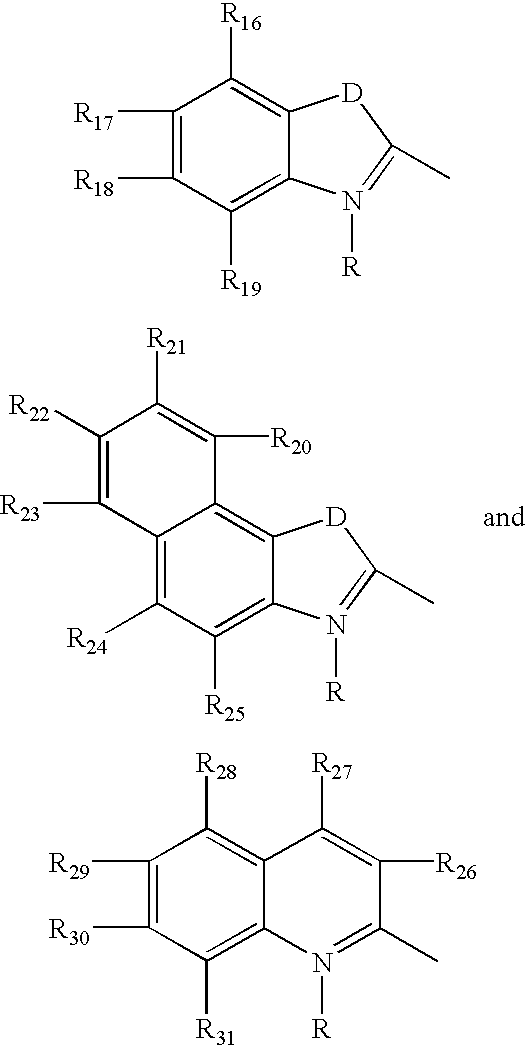Fluorescent membrane intercalating probes and methods for their use
a fluorescent membrane and probe technology, applied in the field of fluorescent dyes, can solve the problems of difficult selection of more than three or four visible emitting fluorochromes attachable to cells, inability to study cellular interactions and responses in vivo, and currently available protein and membrane labels, such as molecular probes and pkh dyes, to achieve the effect of reducing the number of fluorescent dyes
- Summary
- Abstract
- Description
- Claims
- Application Information
AI Technical Summary
Benefits of technology
Problems solved by technology
Method used
Image
Examples
example 2
Synthesis of FR Probe with 713 nm Emission (13)
[0078] This compound prepared from compound 9 (available from Fisher / Acros Chemicals) as shown in Scheme 2 below using similar types of reactions and conditions to those described for compound (8). 6
example 3
Synthesis of FR Probe with 682 nm Emission (25)
[0079] This compound was synthesized by coupling of intermediate 7 from reaction scheme 1 with intermediate 10 of reaction scheme 2 under standard conditions. The compound was purified by column chromatography using standard conditions. This compound provides a far red emitting probe with absorbance and fluorescence properties intermediate to compound (8) and compound 13. The final isolated yield for this product was slightly lower (11.5%) than for Compound (8) and compound (13) due to difficulty in removing the symmetrical byproduct formed by dimerization of intermediate 7. 7
example 4
Synthesis of NIR Probe with 814 nm Emission (15)
[0080] This compound prepared as shown in Scheme 3 below, using similar types of reactions and conditions to those already described above. The compound was synthesized by coupling of intermediate 10 of reaction scheme 2 with intermediate 14 under standard conditions. The desired probe purified by recrystallization or chromatography. 8
PUM
| Property | Measurement | Unit |
|---|---|---|
| wavelength | aaaaa | aaaaa |
| depth | aaaaa | aaaaa |
| depth | aaaaa | aaaaa |
Abstract
Description
Claims
Application Information
 Login to View More
Login to View More - R&D
- Intellectual Property
- Life Sciences
- Materials
- Tech Scout
- Unparalleled Data Quality
- Higher Quality Content
- 60% Fewer Hallucinations
Browse by: Latest US Patents, China's latest patents, Technical Efficacy Thesaurus, Application Domain, Technology Topic, Popular Technical Reports.
© 2025 PatSnap. All rights reserved.Legal|Privacy policy|Modern Slavery Act Transparency Statement|Sitemap|About US| Contact US: help@patsnap.com



